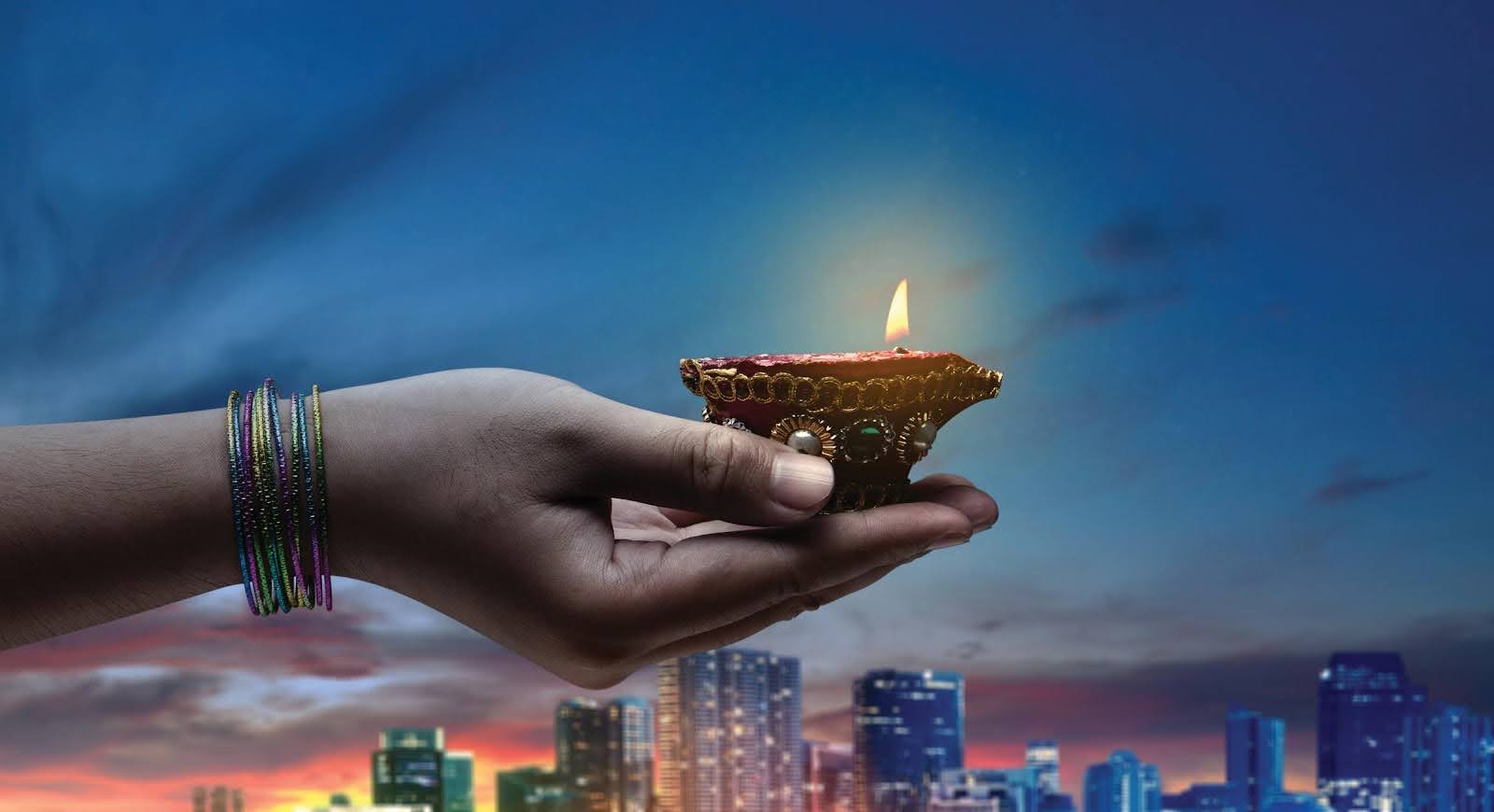In the vast and vibrant mosaic of Indian culture, the tradition of Rangoli occupies a very special place. Rangoli is a popular Indian art form used primarily during occasions such as festivals and events. This visually engaging art form, with its deeply spiritual roots, is a vibrant amalgamation of design, color and symbolism.
Primarily seen in homes and temples, the art of Rangoli is typically immediate- drawing designs on the ground using materials such as chalk powder, limestone, rice flour, or coloured powders. The most important element of a Rangoli artwork is its circular nature, which symbolises the eternal nature of life with no beginning or end. The presence of bright colours used in the Rangoli is symbolic of the colourful and vigorous Indian culture.
Rangoli’s universal symbol is the lotus, representing the divine, the purity of the spirit, and the fertility of the earth. Additionally, the images of deities or icons like Lakshmi (the goddess of wealth and prosperity) or Ganesha (the remover of obstacles) are quite common in Rangoli. This reflects the Indian tradition of invoking deities during important events or festivities.
Another significant aspect of Rangoli is its ephemeral nature. Typically, a Rangoli is made at dawn and changed daily. This daily ritual of creating and replacing Rangoli embodies the essential reality of life’s impermanence and the never-ending cycle of birth, life, death, and rebirth.
This aspect is not only philosophical but also practical, as the Rangoli is often placed in areas of high-foot traffic, slowly eroded and remade, manifesting its transient nature.
There exist distinct styles in the art of Rangoli across different regions of India, each with their unique representation. Styles include the dot Rangoli, also known as the Kolam style, prominent in South India; Alpana of West Bengal with its curvilinear patterns; Madana of Rajasthan, known for its geometric patterns; Aripana of Bihar, with mythological themes; and the chowk pujan of Uttar Pradesh, typically drawn during auspicious events. Each style is a reflection of the regional customs, societal norms, and aesthetic preferences.
In recent times, Rangoli art has evolved to blend traditional designs with contemporary patterns and themes. This modern reiteration of Rangoli involves the use of unconventional materials, such as coloured sand and glass, flowers and petals, or even light installations. Consequently, Rangoli now finds broader applications, such as in interior designing, event decoration, or performance art.
In conclusion, Rangoli, an enchanting art form, carries profound significance in Indian culture. Its transcendental symbolism, diverse styles, and its evocative of the human condition’s transience lends an air of deeply rooted spirituality. Evolving with time, this traditional art form continues to find relevance and appreciation in today’s globalised, contemporary setting.




